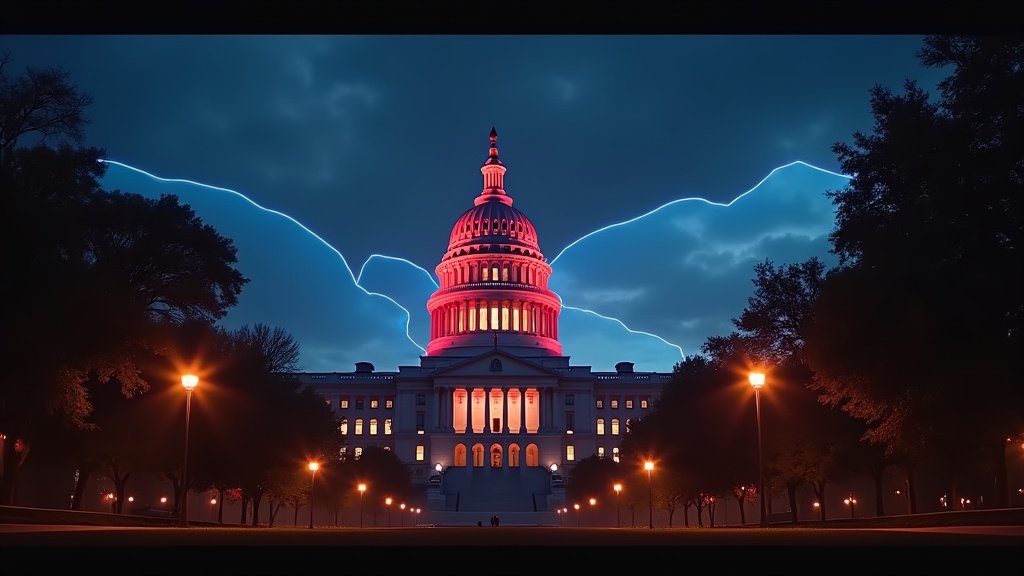Texas lawmakers have finalized and approved a controversial new congressional map, a move that significantly bolsters the Republican Party’s electoral prospects and has ignited a nationwide redistricting battle. The Texas Senate gave its final approval to the Republican-leaning map early Saturday morning, August 23, 2025, after a contentious session that concluded with a party-line vote of 18-11. The measure now heads to the desk of Governor Greg Abbott, a Republican, who has indicated he will swiftly sign it into law.
Legislative Gauntlet Cleared Amid Fierce Opposition
The passage of the new congressional map followed weeks of intense partisan clashes and legislative maneuvering. The process was marked by a dramatic two-week walkout by dozens of Texas House Democrats, who fled the state to deny Republicans the necessary quorum to vote on the bill. Upon their return, the battle shifted to the Senate, where Democrats attempted to stall the map’s approval through filibuster efforts. Despite these attempts, Republican senators successfully countered the opposition, pushing the legislation forward.
The Republican-backed proposal, which the Texas House had previously approved on an 88-52 party-line vote, aims to reshape the state’s 38 congressional districts. Proponents argue the map reflects the voting preferences of Texans and is essential for maintaining Republican representation in Congress. State Senator Phil King, the bill’s sponsor in the Senate, stated that the underlying goal was to “improve Republican political performance,” acknowledging that the U.S. Supreme Court has permitted partisan gerrymandering.
Boosting GOP Power for 2026 Midterms
The core objective of the redistricting effort, strongly advocated for by former President Donald Trump, is to enhance the Republican Party’s chances of retaining its slim majority in the U.S. House of Representatives in the upcoming 2026 midterm elections. Analysts and observers suggest the new map could create as many as five additional Republican-leaning congressional districts within Texas. This strategic redrawing often involves consolidating Democratic voters into fewer districts, a practice known as “packing,” or diluting their voting power by spreading them across multiple districts, termed “cracking.”
The proposed map directly impacts several incumbent Democratic representatives. Notably, Representative Lloyd Doggett, the dean of the Texas congressional delegation, announced he would not seek re-election to his Austin-based seat if the new map takes effect, as his district would now overlap with that of fellow Democratic Representative Greg Casar. Other Democratic strongholds in Austin, Houston, and the Dallas-Fort Worth metroplex are significantly altered, with some districts that previously leaned Democratic now heavily favoring Republicans. Republican-held districts, conversely, are largely kept intact and remain safely in GOP control.
Democratic Outcry and Legal Threats
Democrats and voting rights advocates have vehemently opposed the new map, leveling accusations of racial discrimination and partisan gerrymandering. They argue that the map unconstitutionally dilutes the voting power of Black and Latino Texans and allows politicians to choose their voters, rather than the other way around. Several Democratic representatives have stated their intent to challenge the map in court, citing past legal battles where Texas’s redistricting efforts were found to violate the Voting Rights Act.
“It exposes the hypocrisy of Republicans, who will turn around and raise millions off stealing Texans’ votes while silencing their voices,” one Democratic lawmaker stated. The legal challenges are expected to focus on alleged violations of Section 2 of the Voting Rights Act, which prohibits voting practices that discriminate based on race, color, or language minority status.
A National Redistricting War Erupts
The push for new congressional maps in Texas has sparked a broader, state-by-state redistricting battle across the nation. President Trump has reportedly encouraged other Republican-controlled states, including Indiana, Missouri, and Ohio, to pursue similar map revisions. In a significant countermove, California’s Democratic-controlled legislature has advanced its own redistricting plan, designed to create five new Democratic-leaning congressional seats, effectively aiming to offset any Republican gains in Texas.
Governor Abbott has criticized California’s approach, calling it “a joke” while asserting the constitutionality of Texas’s new map. This tit-for-tat dynamic has intensified the competition for political advantage ahead of the 2026 midterms, with control of the U.S. House of Representatives potentially hanging in the balance.
Governor’s Signature and Impending Legal Battles
With the Texas Senate’s approval, the map is now on its way to Governor Abbott, who has consistently championed the redistricting effort. His office has confirmed his intention to sign the bill promptly, signaling the end of the legislative phase of this contentious issue in Texas. However, the legislative victory is likely to be short-lived as legal challenges are widely anticipated, setting the stage for a protracted court battle that could ultimately determine the map’s fate and its impact on Texas representation in Congress for years to come. The approval of this map makes it a trending piece of political news in Texas and nationally. This development is a featured event in the ongoing political discourse.






